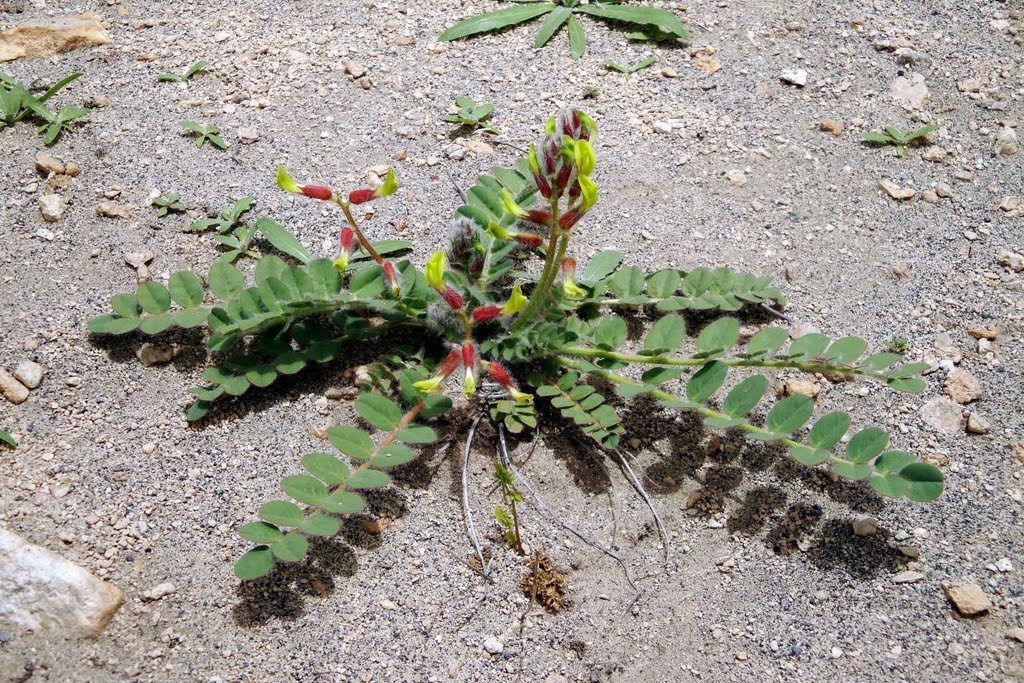Astragalus massalskyi: Red Data Book of Armenia

EN B 1 ab(i,ii,iii) + 2 ab(i,ii,iii)
Category. Endangered species. Endemic of South Transcaucasia. Two populations are known. The extent of occurrence is less than 5000 km2, the area of occupancy is less than 500 km2. The species grows in the zone of intensive agricultural activities. It was included in the first edition of the Red Data Book of Armenia under Category 2: Rare species. It is not included in the Annexes of CITES and that of the Bern Convention.
Description. Stemless perennial plant, covered with bipartite hairs. Leaves 5–20 cm long; leaflets 6–9–paired, lanceolate. Peduncles shorter than leaves, 2–10 cm long, 3–5–flowered. Corolla yellow, 22–27 mm long. Legumes globular, inflated, coriaceus, 13–20 mm in diam.
Distribution. In Armenia it occurs in Shirak (between the villages Koshavan and Kharkov) and Yerevan (Yerakh and Urts mountain ranges, surroundings of Goravan village) floristic regions. EOO is 1540 km2, AOO is 40 km2, the number of locations is 6. Besides Armenia the species grows in Nakhichevan.
Ecological, biological and phytocoenological peculiarities. Grows in lower and middle mountain belts, at the altitudes of 700–1500 meters above sea level, in clay, stony and sandy places, among phryganoid vegetation and tragacanth communities, in the sandy desert. Flowering from April to May, fruiting from May to June.
Limiting factors. Restricted extent of occurrence and area of occupancy, loss/degradation of habitats caused by land development.
Conservation actions. Part of the population grows in "Khosrov Forest" State Reserve. Necessary: establishment of new specially protected nature area on Yerakh mountain range, monitoring of the population state.
Suggestions
 The Ministry of Environment sent a letter international partners to draw their attention to the real danger of environmental disasters as a result of Azerbaijan's large-scale aggression towards the territory of Armenia
The Ministry of Environment sent a letter international partners to draw their attention to the real danger of environmental disasters as a result of Azerbaijan's large-scale aggression towards the territory of Armenia
 Vicia pisiformis: Red Data Book of Armenia
Vicia pisiformis: Red Data Book of Armenia
 Vavilovia formosa: Red Data Book of Armenia
Vavilovia formosa: Red Data Book of Armenia
 Trigonella capitata: Red Data Book of Armenia
Trigonella capitata: Red Data Book of Armenia
 Trigonella astroides: Red Data Book of Armenia
Trigonella astroides: Red Data Book of Armenia












